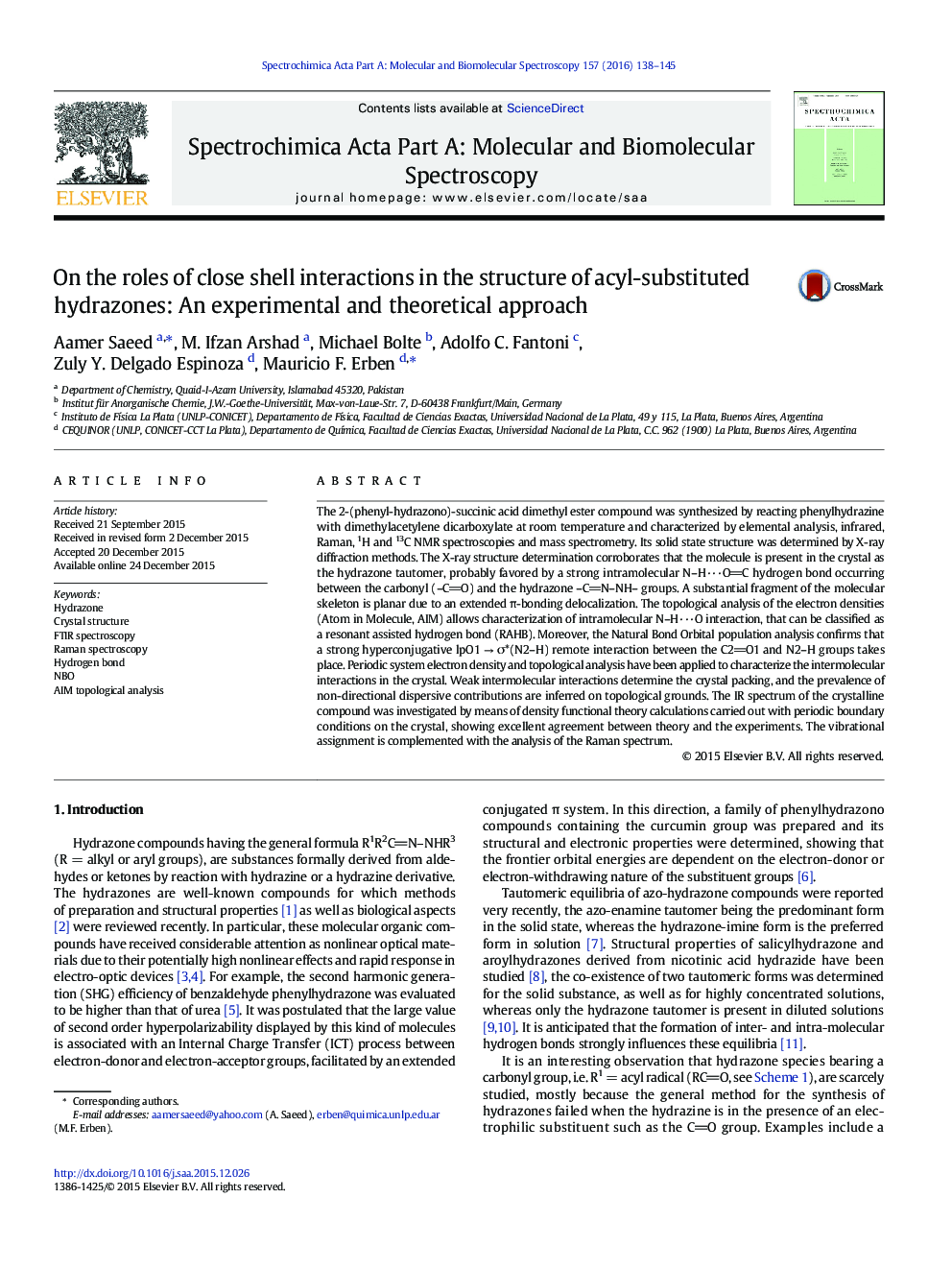| کد مقاله | کد نشریه | سال انتشار | مقاله انگلیسی | نسخه تمام متن |
|---|---|---|---|---|
| 1229327 | 1495212 | 2016 | 8 صفحه PDF | دانلود رایگان |
• Crystal structures and vibrational properties were determined.
• The molecular hydrazone skeleton is planar due to an extended π-bonding delocalization.
• The acyl hydrazone group is involved in strong N–H···OC intramolecular hydrogen bond.
• Strong hyperconjugative lpO1 → σ*(N2–H) remote interaction takes place.
• Intramolecular N–H···O interaction is described by AIM topological analysis.
The 2-(phenyl-hydrazono)-succinic acid dimethyl ester compound was synthesized by reacting phenylhydrazine with dimethylacetylene dicarboxylate at room temperature and characterized by elemental analysis, infrared, Raman, 1H and 13C NMR spectroscopies and mass spectrometry. Its solid state structure was determined by X-ray diffraction methods. The X-ray structure determination corroborates that the molecule is present in the crystal as the hydrazone tautomer, probably favored by a strong intramolecular N–H···OC hydrogen bond occurring between the carbonyl (–CO) and the hydrazone –CN–NH– groups. A substantial fragment of the molecular skeleton is planar due to an extended π-bonding delocalization. The topological analysis of the electron densities (Atom in Molecule, AIM) allows characterization of intramolecular N–H···O interaction, that can be classified as a resonant assisted hydrogen bond (RAHB). Moreover, the Natural Bond Orbital population analysis confirms that a strong hyperconjugative lpO1 → σ*(N2–H) remote interaction between the C2O1 and N2–H groups takes place. Periodic system electron density and topological analysis have been applied to characterize the intermolecular interactions in the crystal. Weak intermolecular interactions determine the crystal packing, and the prevalence of non-directional dispersive contributions are inferred on topological grounds. The IR spectrum of the crystalline compound was investigated by means of density functional theory calculations carried out with periodic boundary conditions on the crystal, showing excellent agreement between theory and the experiments. The vibrational assignment is complemented with the analysis of the Raman spectrum.
Figure optionsDownload as PowerPoint slide
Journal: Spectrochimica Acta Part A: Molecular and Biomolecular Spectroscopy - Volume 157, 15 March 2016, Pages 138–145
